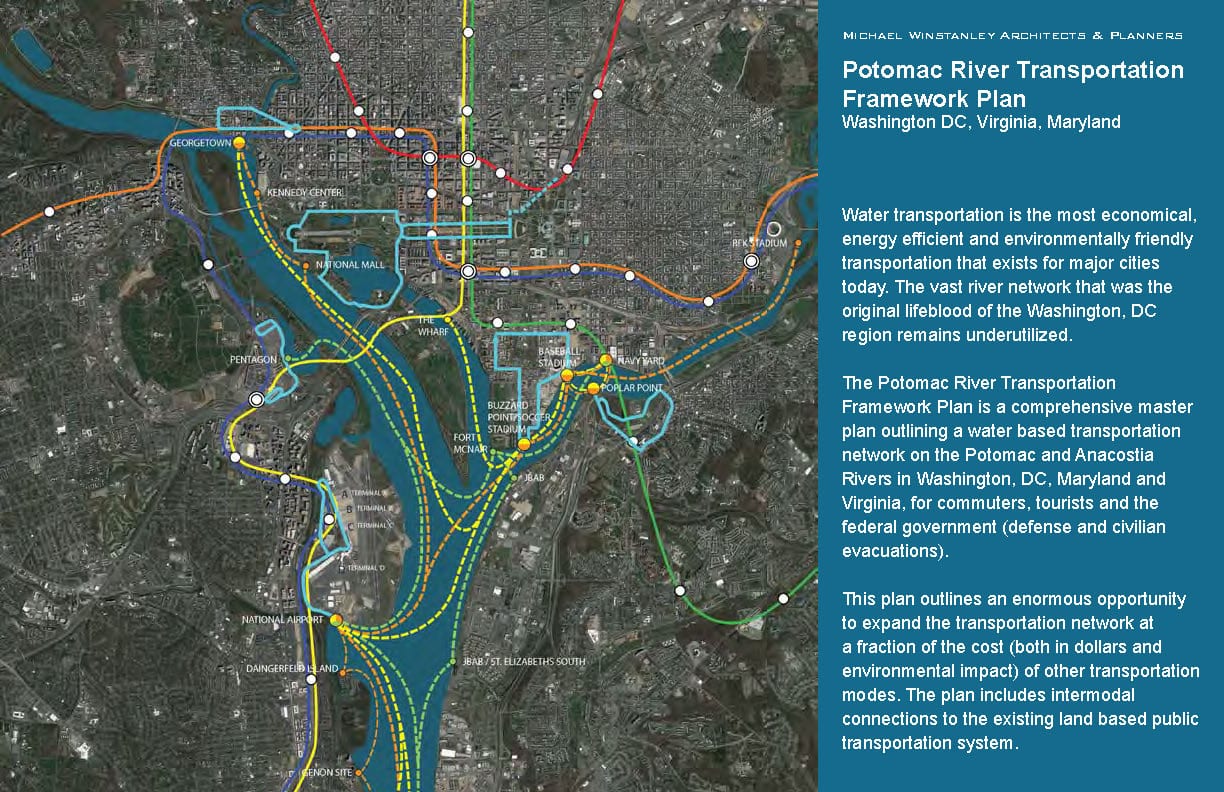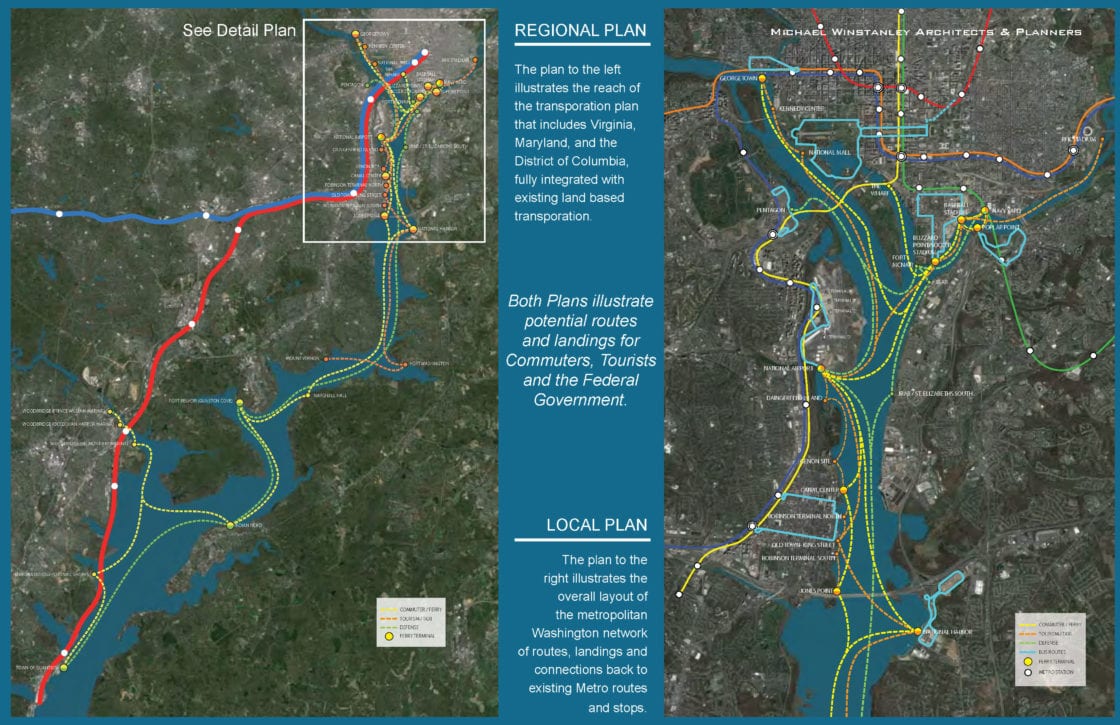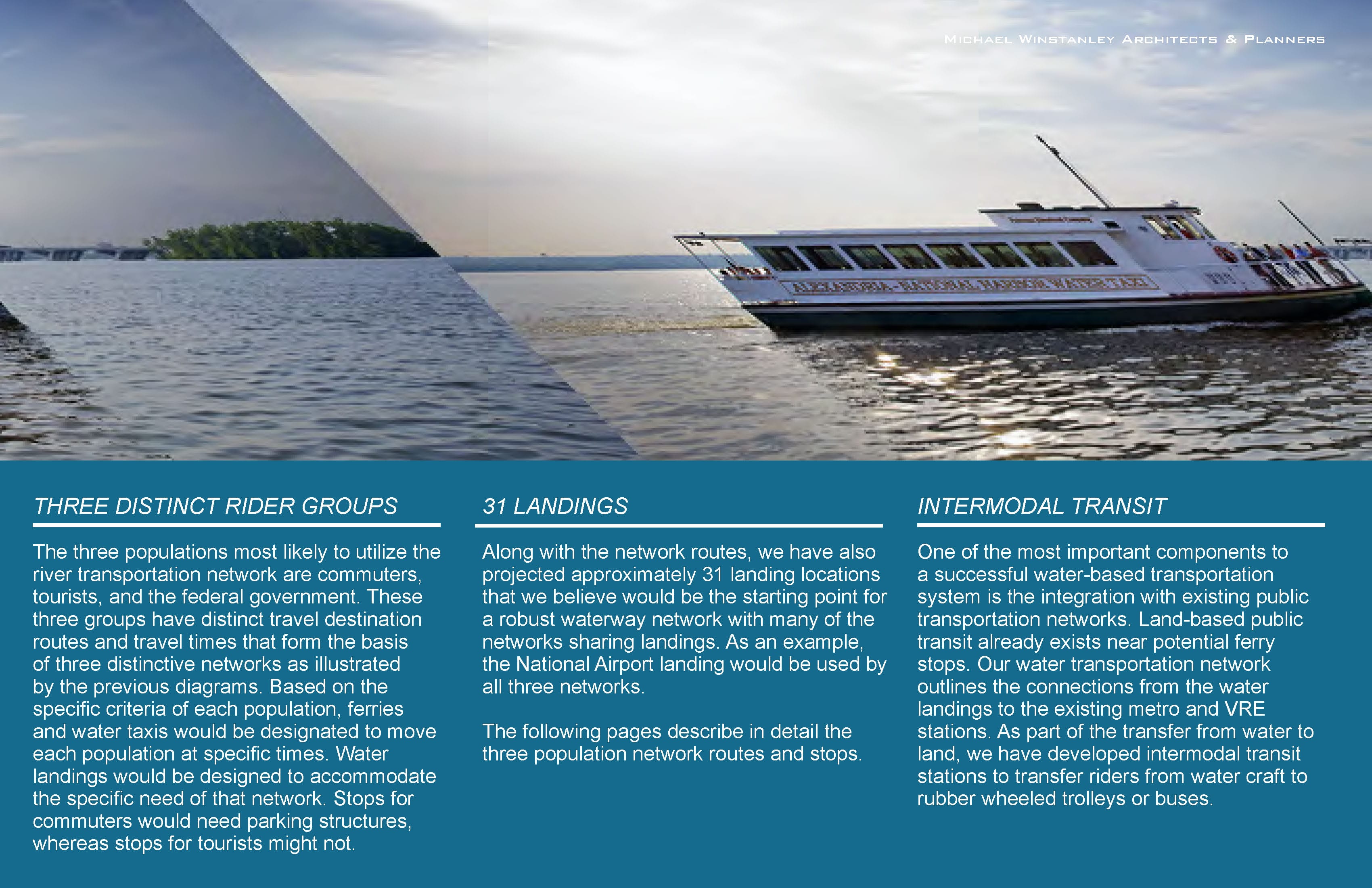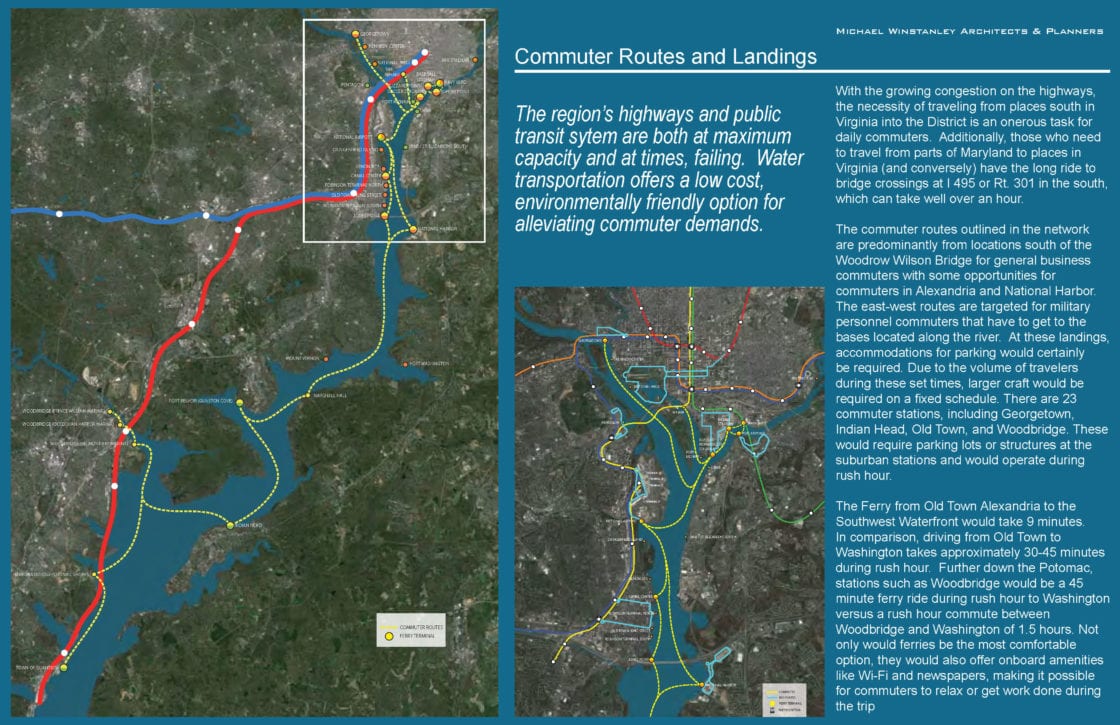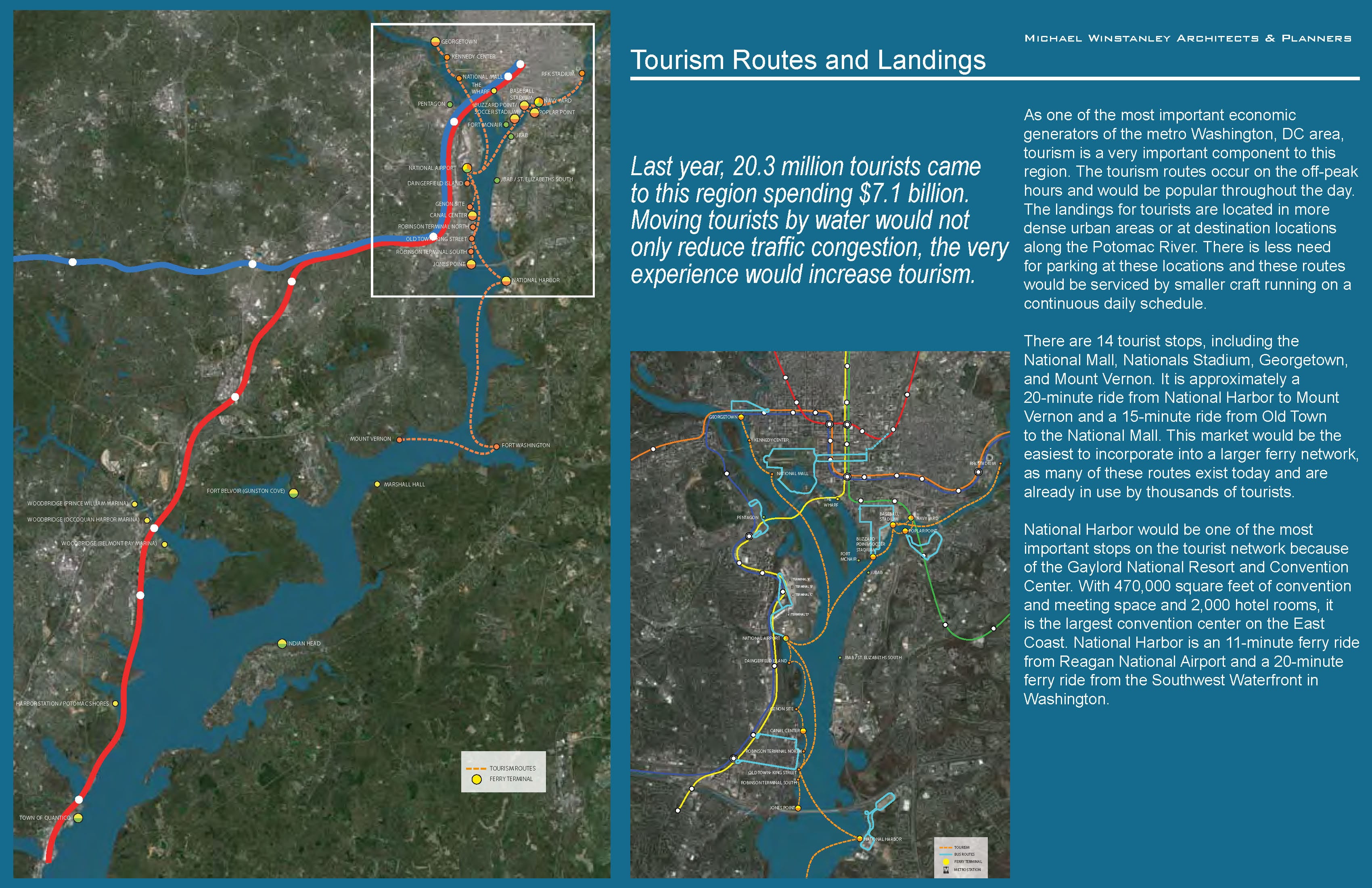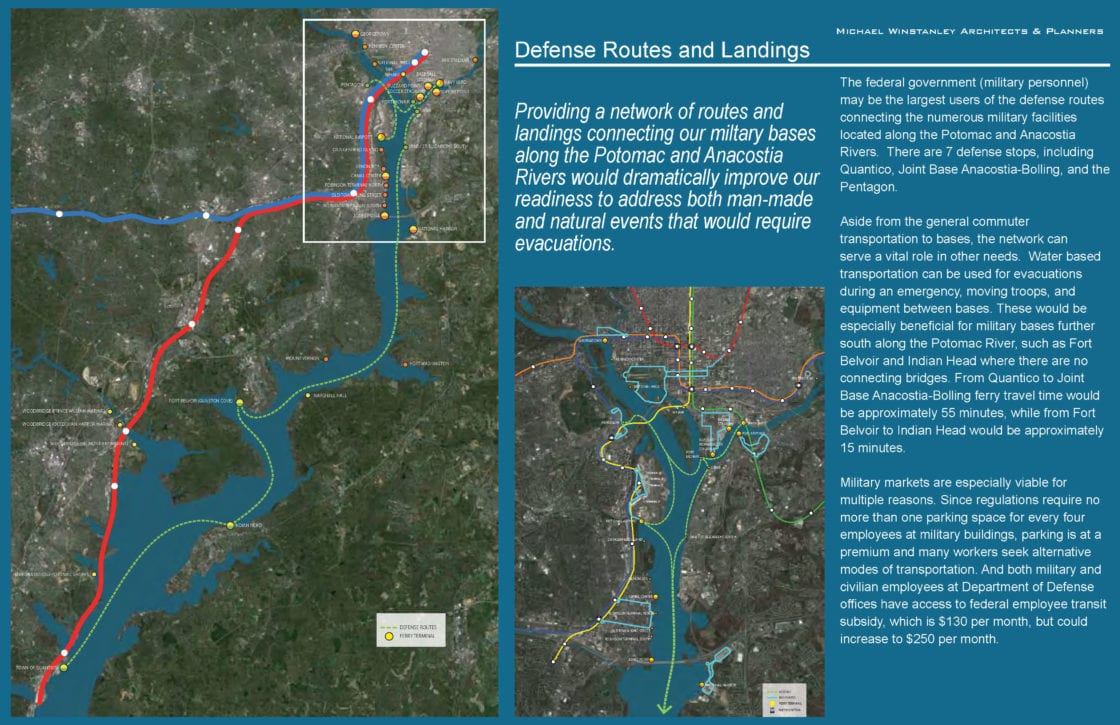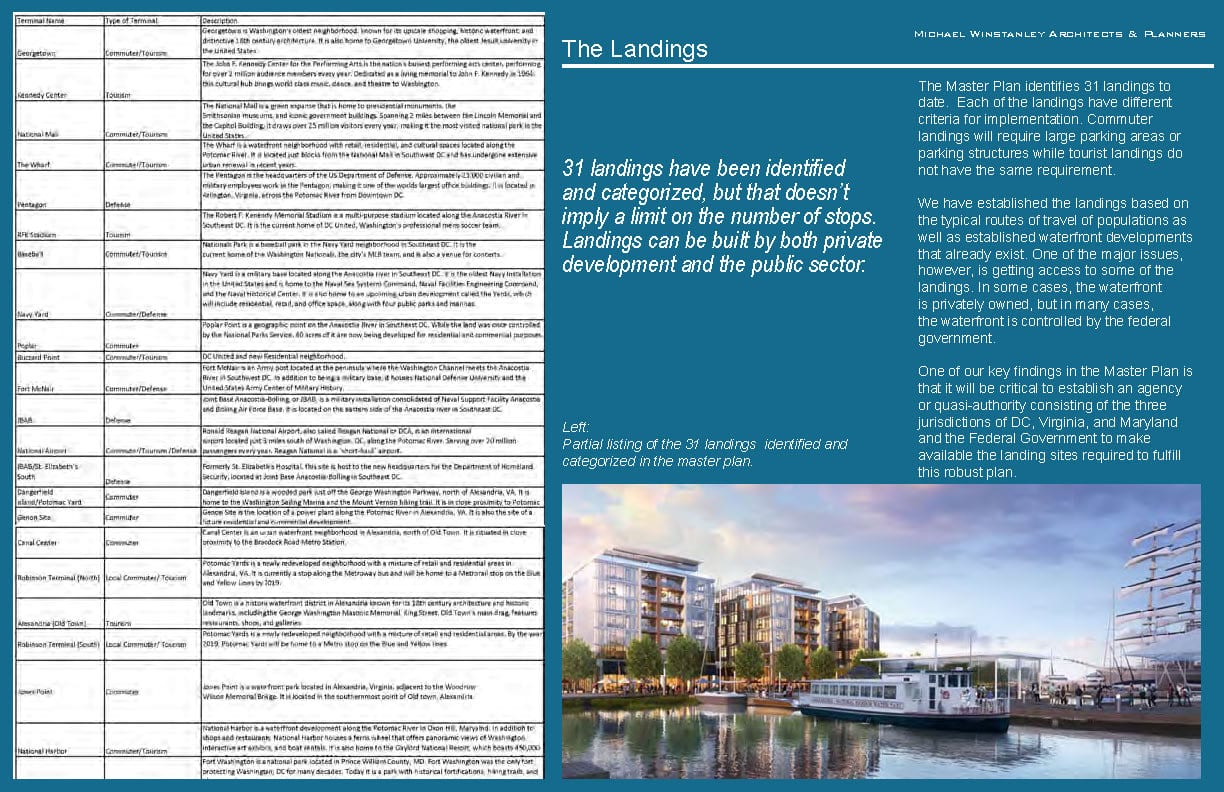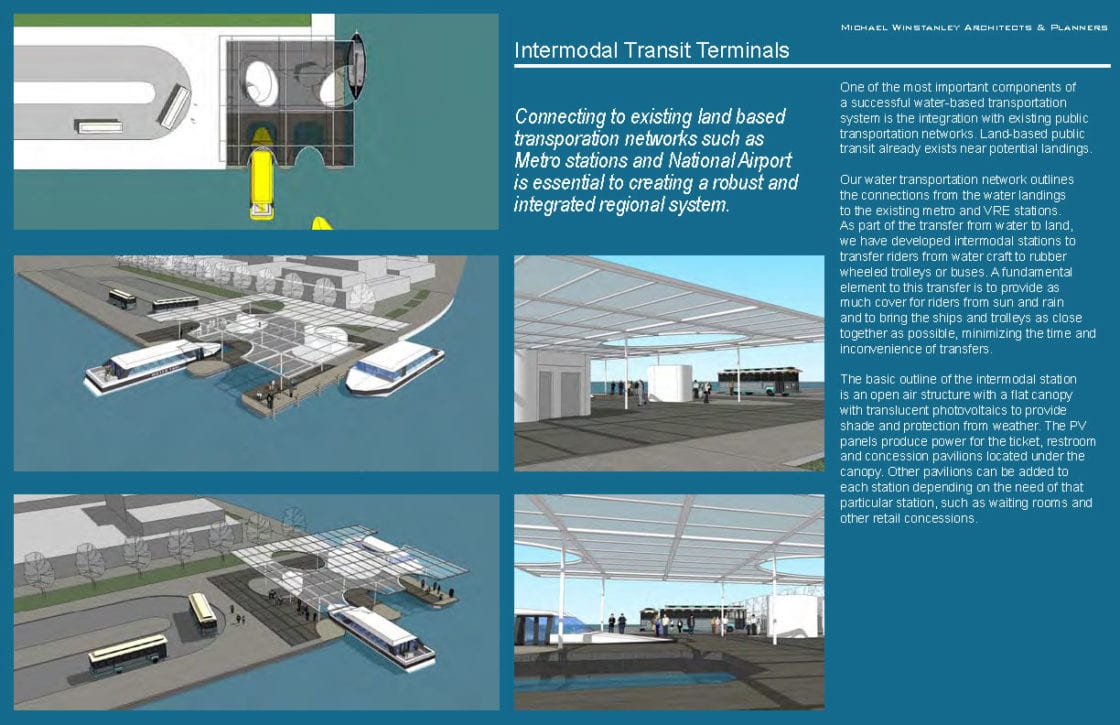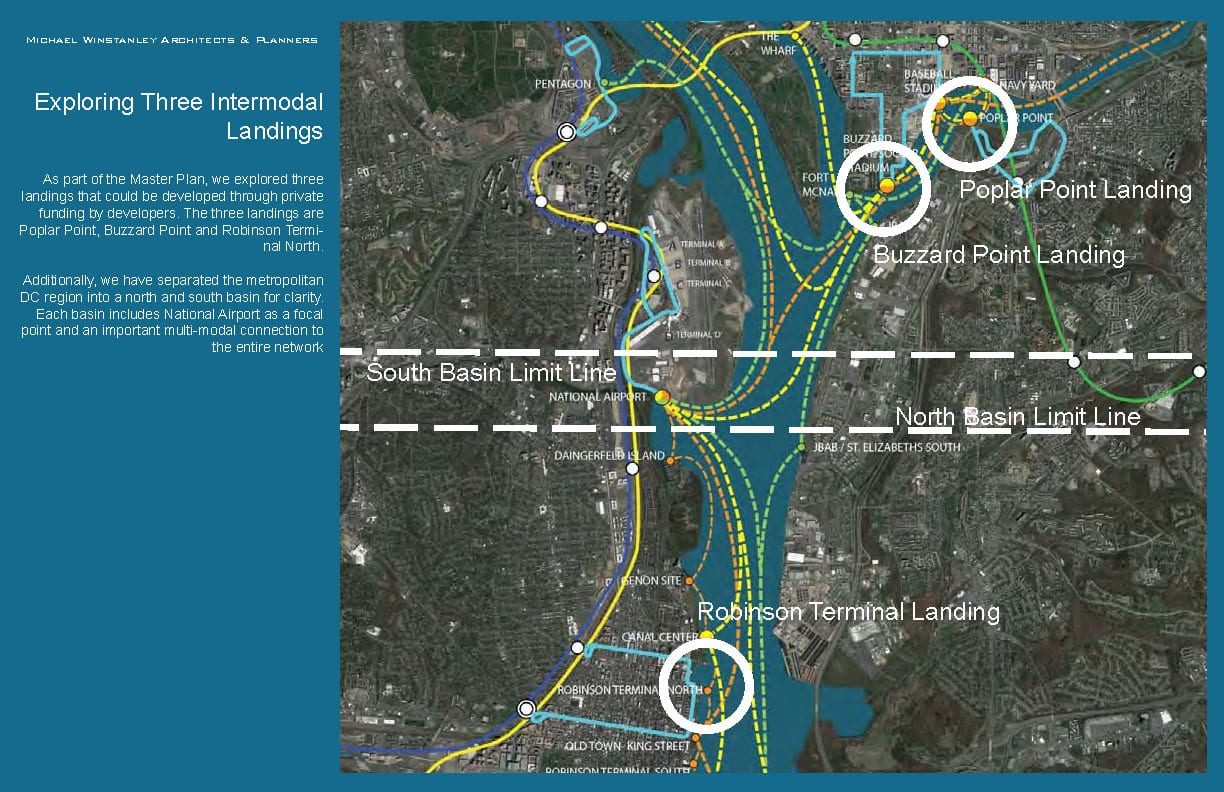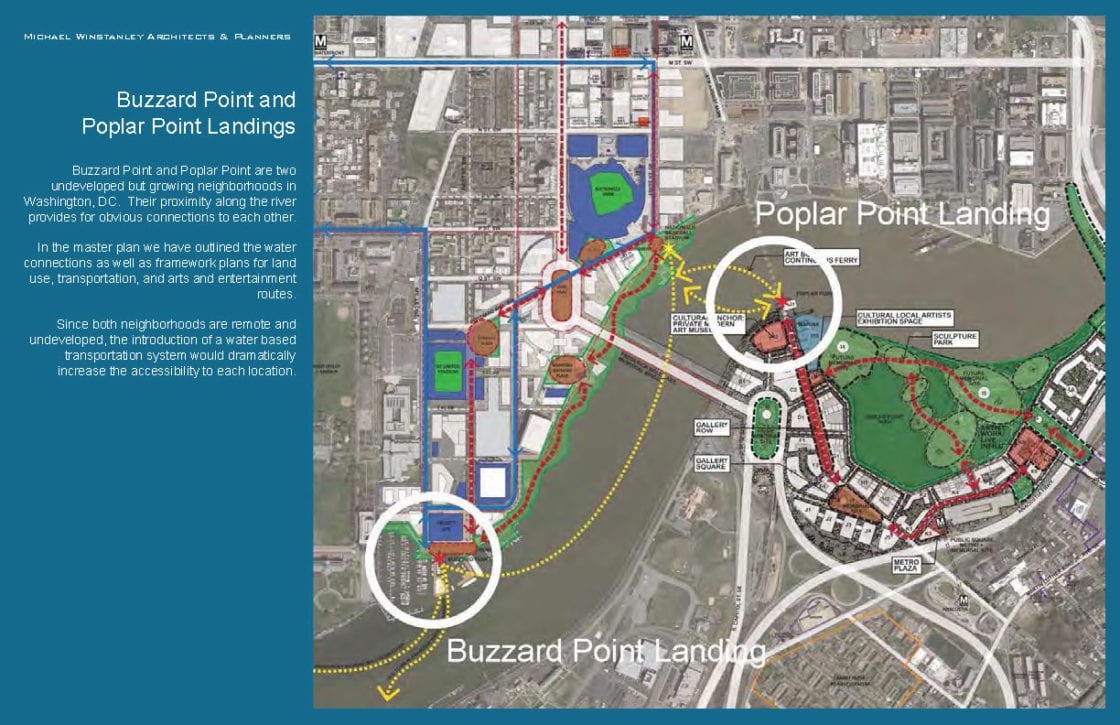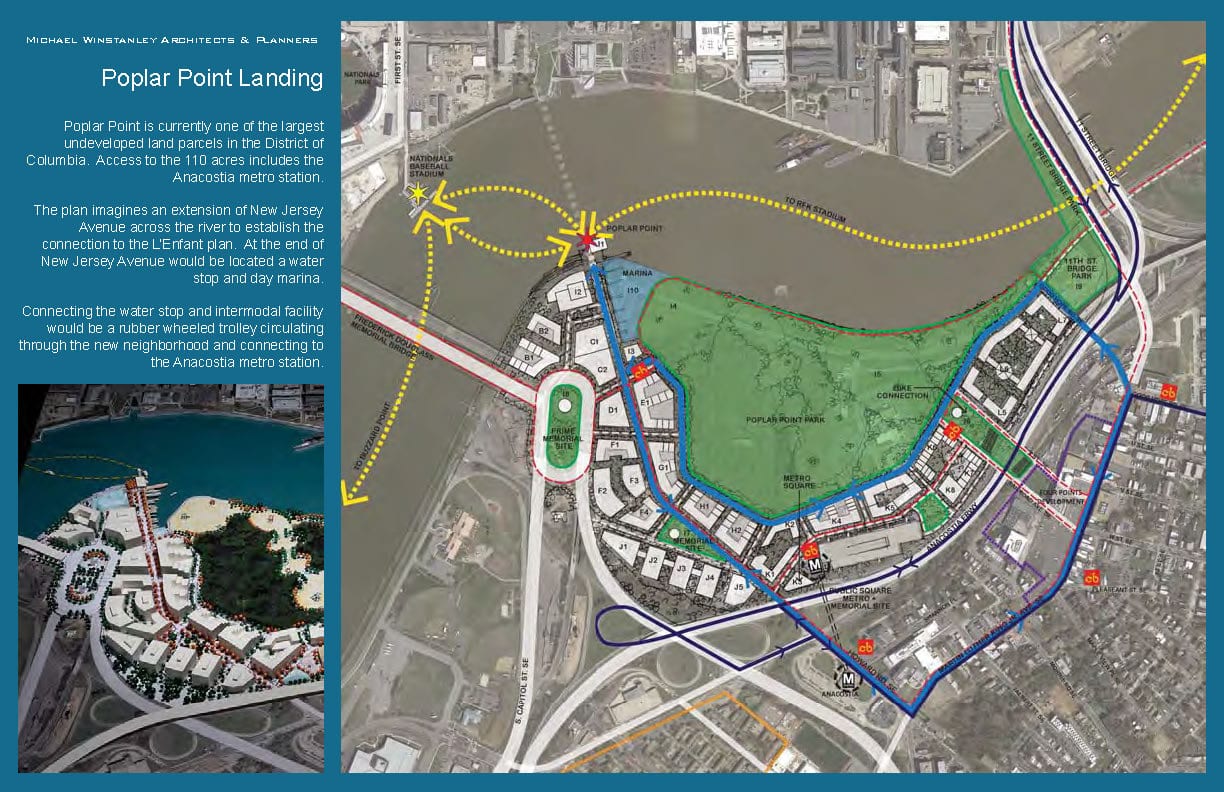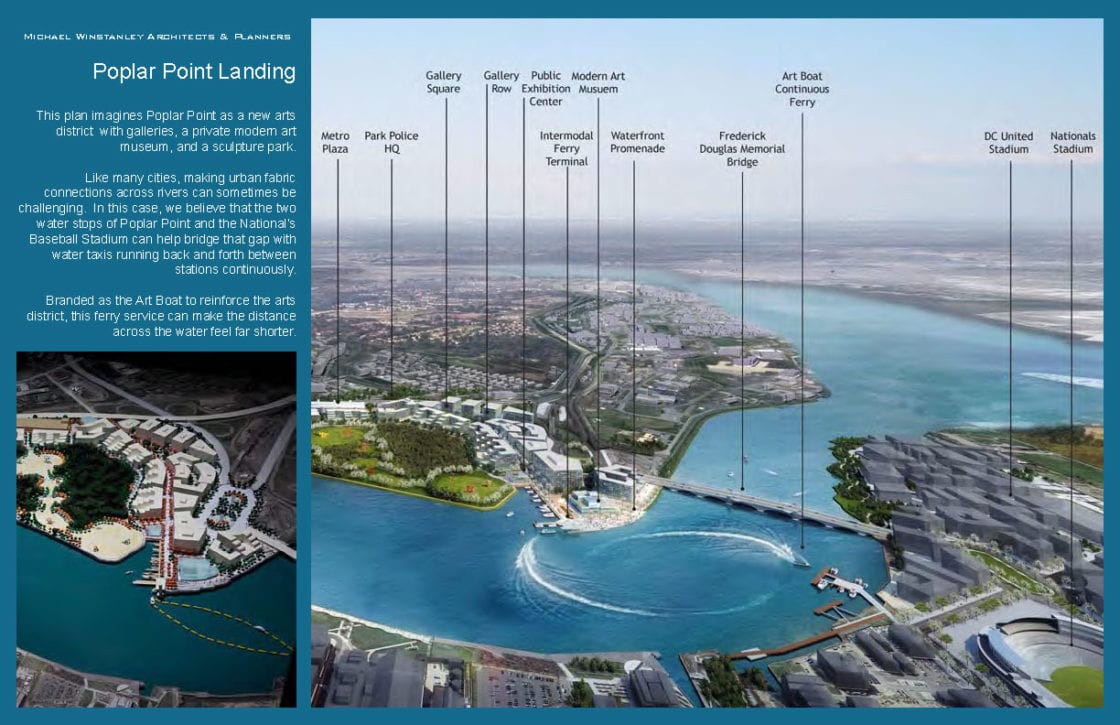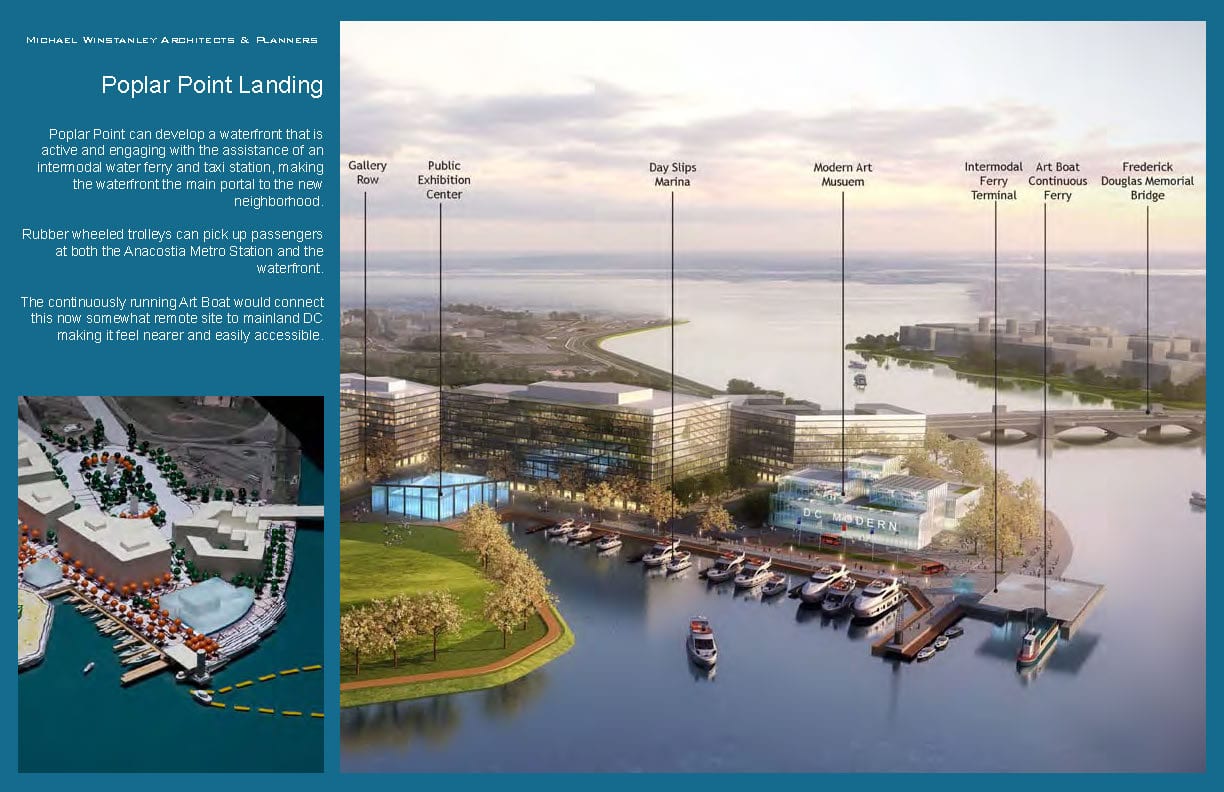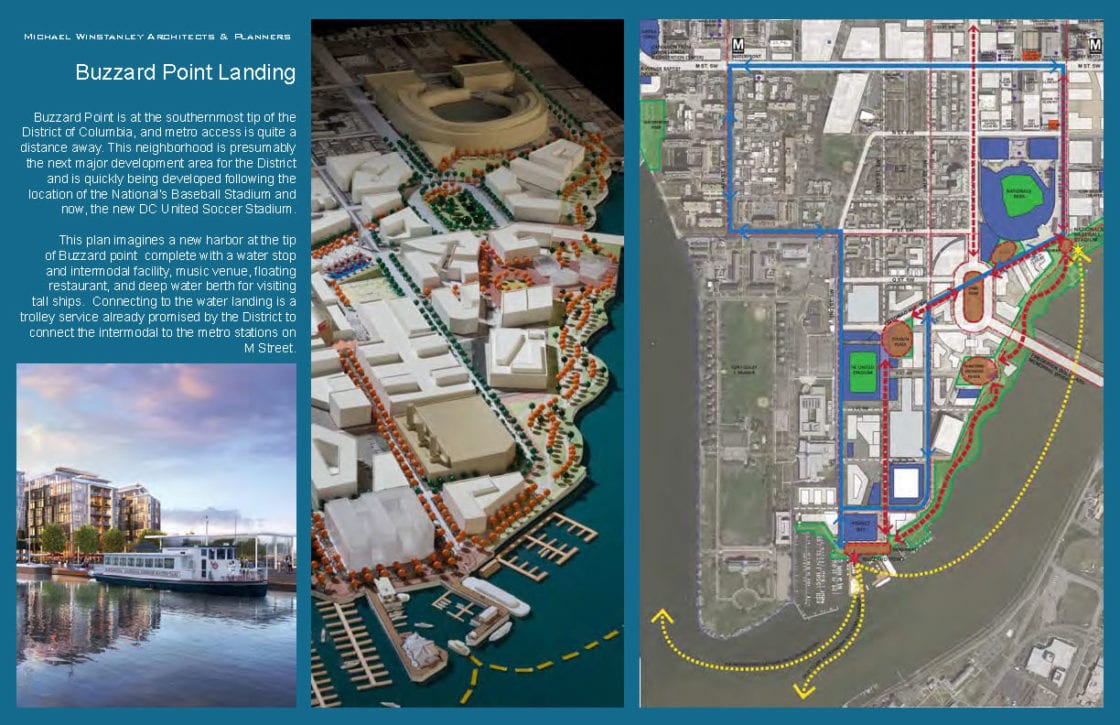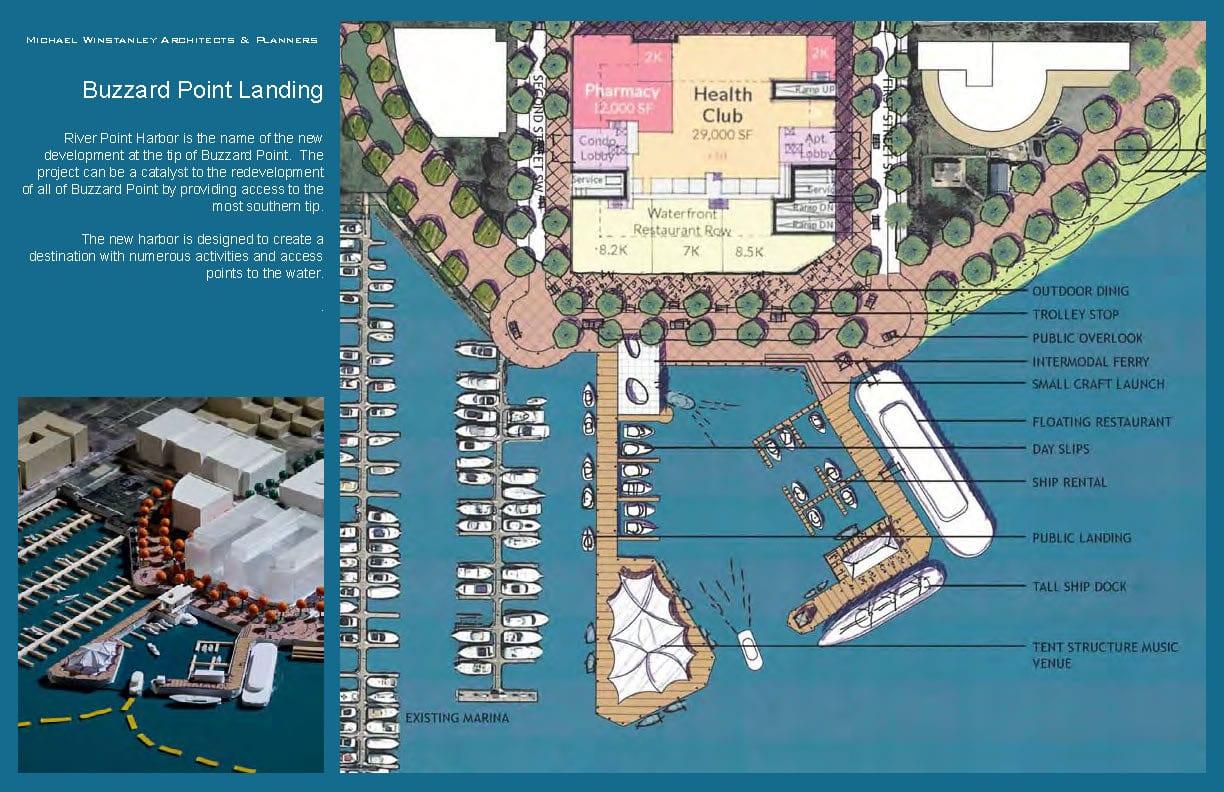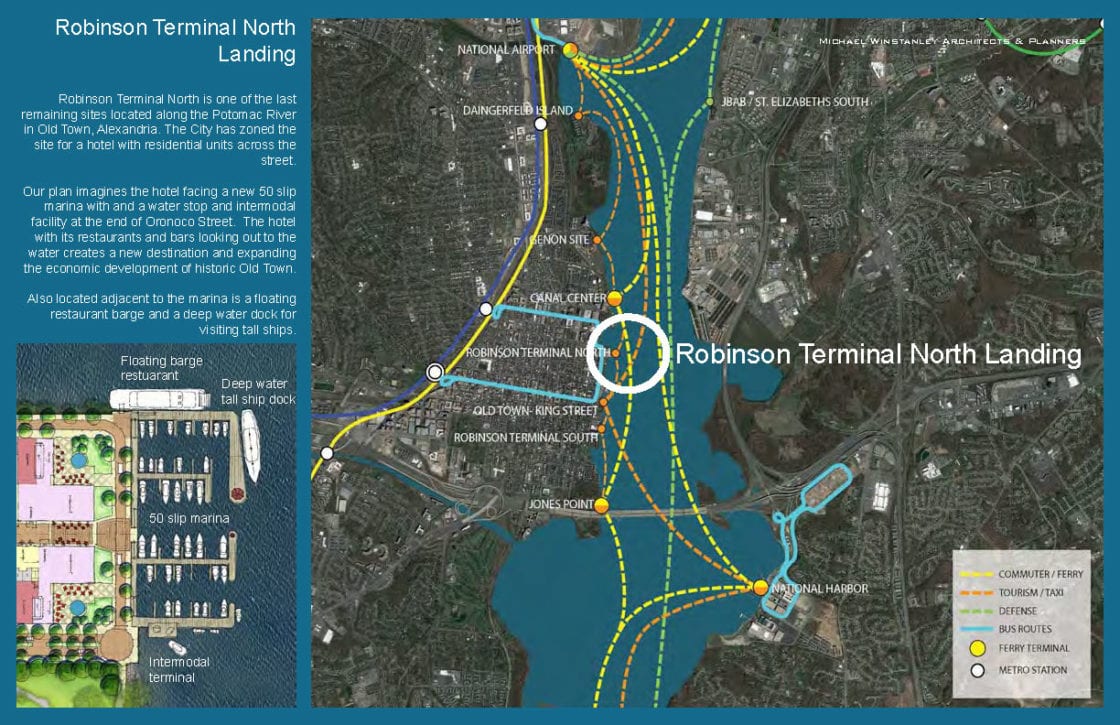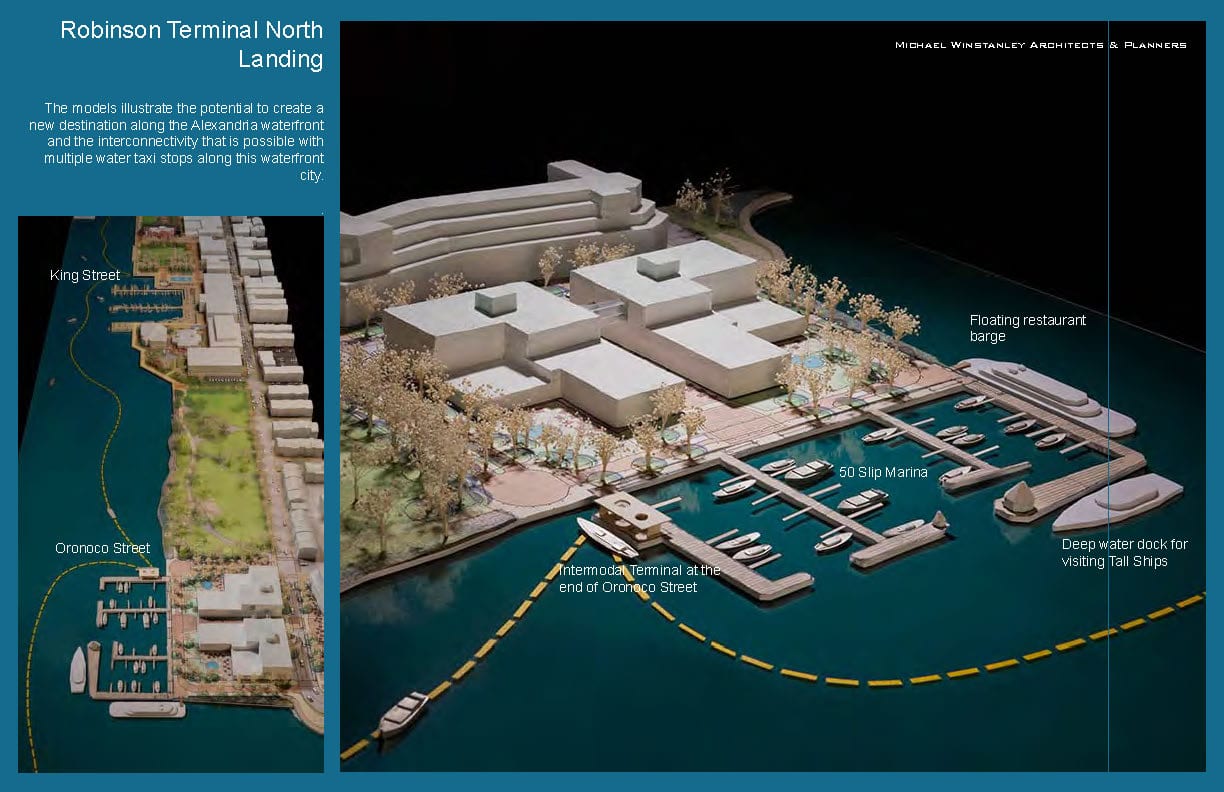Instruction
Water transportation is the most economical, energy efficient and environmentally friendly transportation that exists for major cities today. The vast river network that was the original lifeblood of the Washington, DC region remains underutilized.
The Potomac River Transportation Framework Plan is a comprehensive master plan outlining a water based transportation network on the Potomac and Anacostia Rivers in Washington, DC, Maryland and Virginia, for commuters, tourists and the federal government (defense and civilian evacuations).
This plan outlines an enormous opportunity to expand the transportation network at a fraction of the cost (both in dollars and environmental impact) of other transportation modes. The plan includes intermodal connections to the existing land based public transportation system.
Regional Plan & Local Plan
The plan to the left illustrates the reach of the transporation plan that includes Virginia, Maryland, and the District of Columbia, fully integrated with existing land based transporation.
The plan to the right illustrates the overall layout of the metropolitan Washington network of routes, landings and connections back to existing Metro routes and stops.
Both plans illustrate potential routes and landings for commuters, tourists and the federal government.
Three District Rider Groups & 31 Landings & Intermodal Transit
The three populations most likely to utilize the river transportation network are commuters, tourists, and the federal government. These three groups have distinct travel destination routes and travel times that form the basis of three distinctive networks as illustrated by the previous diagrams. Based on the specific criteria of each population, ferries and water taxis would be designated to move each population at specific times. Water landings would be designed to accommodate the specific need of that network. Stops for commuters would need parking structures, whereas stops for tourists might not.
Commuter Routes and Landings
The region’s highways and public transit sytem are both at maximum capacity and at times, failing. Water transportation offers a low cost, environmentally friendly option for alleviating commuter demands.
Tourism Routes and Landings
Last year, 20.3 million tourists came to this region spending $7.1 billion. Moving tourists by water would not only reduce traffic congestion, the very experience would increase tourism.
Defense Routes and Landings
Providing a network of routes and landings connecting our miltary bases along the Potomac and Anacostia Rivers would dramatically improve our readiness to address both man-made and natural events that would require evacuations.
The Landings
31 Landings have been identified and categorized, but that doesn’t imply a limit on the number of stops. Landings can be built by both private development and the public sector.
Intermodal Transit Terminals
Connecting to existing land based transportation networks such as Metro stations and National Airport is essential to creating a robust and integrated regional system.
Exploring Three Intermodal landings
As part of the Master Plan, we explored three landings that could be developed through private funding by developers. The three landings are Poplar Point, Buzzard Point and Robinson Terminal North.
Additionally, we have separated the metropolitan DC region into a north and south basin for clarity. Each basin includes National Airport as a focal point and an important multi-modal connection to the entire network
Buzzard Point and Poplar Point Landings
Buzzard Point and Poplar Point are two undeveloped but growing neighborhoods in Washington, DC. Their proximity along the river provides for obvious connections to each other.
In the master plan we have outlined the water connections as well as framework plans for land use, transportation, and arts and entertainment routes.
Since both neighborhoods are remote and undeveloped, the introduction of a water based transportation system would dramatically increase the accessibility to each location.
Poplar Point Landing
Poplar Point is currently one of the largest undeveloped land parcels in the District of Columbia. Access to the 110 acres includes the Anacostia metro station.
The plan imagines an extension of New Jersey Avenue across the river to establish the connection to the L’Enfant plan. At the end of New Jersey Avenue would be located a water stop and day marina.
Connecting the water stop and intermodal facility would be a rubber wheeled trolley circulating through the new neighborhood and connecting to the Anacostia metro station.
Poplar Point Landing
This plan imagines Poplar Point as a new arts district with galleries, a private modern art museum, and a sculpture park.
Like many cities, making urban fabric connections across rivers can sometimes be challenging. In this case, we believe that the two water stops of Poplar Point and the National’s Baseball Stadium can help bridge that gap with water taxis running back and forth between stations continuously.
Branded as the Art Boat to reinforce the arts district, this ferry service can make the distance across the water feel far shorter.
Poplar Point Landing
Poplar Point can develop a waterfront that is active and engaging with the assistance of an intermodal water ferry and taxi station, making the waterfront the main portal to the new neighborhood.
Rubber wheeled trolleys can pick up passengers at both the Anacostia Metro Station and the waterfront.
The continuously running Art Boat would connect this now somewhat remote site to mainland DC making it feel nearer and easily accessible.
Buzzard Point Landing
Buzzard Point is at the southernmost tip of the District of Columbia, and metro access is quite a distance away. This neighborhood is presumably the next major development area for the District and is quickly being developed following the location of the National’s Baseball Stadium and now, the new DC United Soccer Stadium.
This plan imagines a new harbor at the tip of Buzzard point complete with a water stop and intermodal facility, music venue, floating restaurant, and deep water berth for visiting tall ships. Connecting to the water landing is a trolley service already promised by the District to connect the intermodal to the metro stations on M Street.
Buzzard Point Landing
River Point Harbor is the name of the new development at the tip of Buzzard Point. The project can be a catalyst to the redevelopment of all of Buzzard Point by providing access to the most southern tip.
The new harbor is designed to create a destination with numerous activities and access points to the water.
Robinson Terminal North Landing
Robinson Terminal North is one of the last remaining sites located along the Potomac River in Old Town, Alexandria. The City has zoned the site for a hotel with residential units across the street.
Our plan imagines the hotel facing a new 50 slip marina with and a water stop and intermodal facility at the end of Oronoco Street. The hotel with its restaurants and bars looking out to the water creates a new destination and expanding the economic development of historic Old Town.
Also located adjacent to the marina is a floating restaurant barge and a deep water dock for visiting tall ships.
Robinson Terminal North Landing
The models illustrate the potential to create a new destination along the Alexandria waterfront and the interconnectivity that is possible with multiple water taxi stops along this waterfront city.

